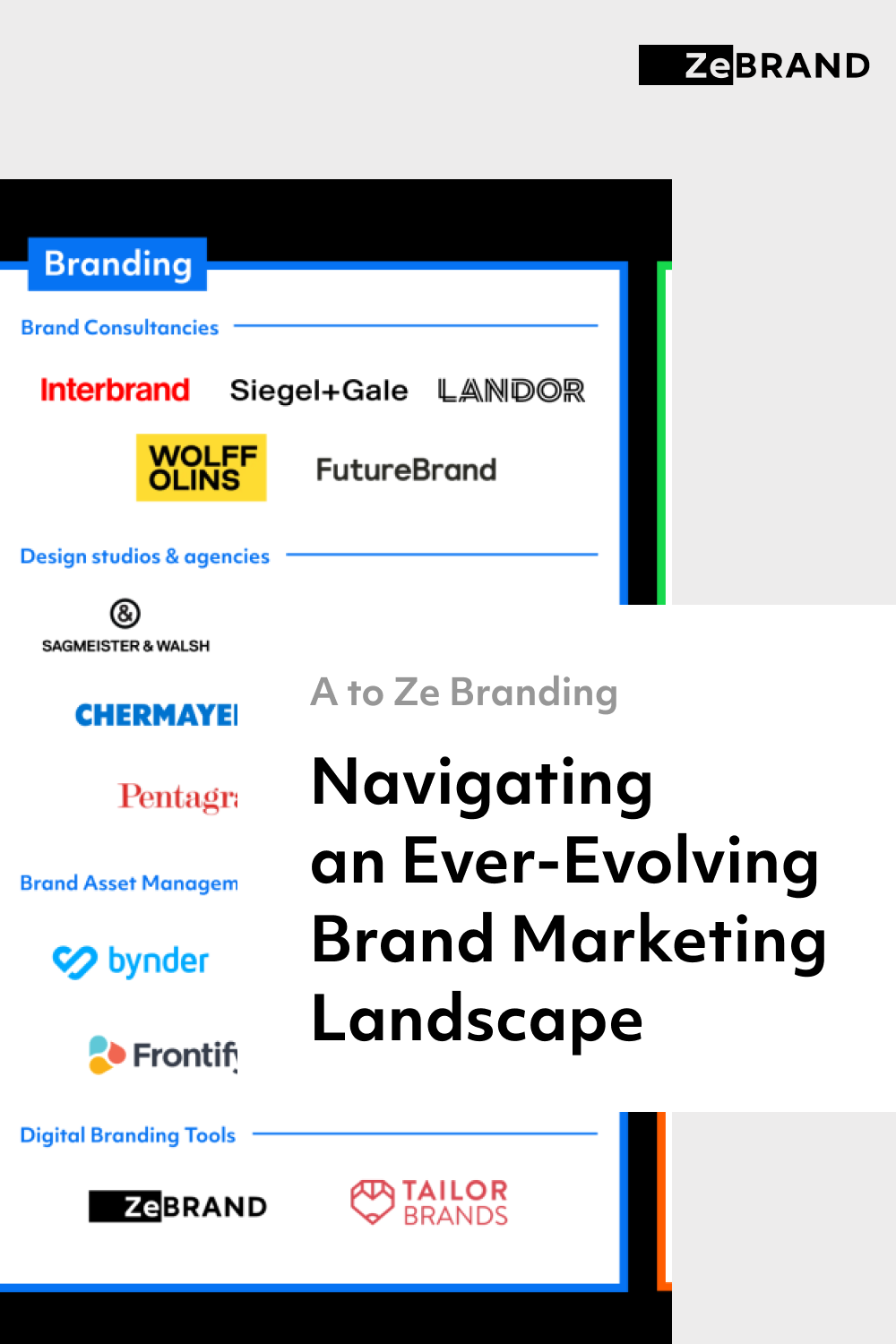Navigating an Ever-Evolving Brand Marketing Landscape

The marketing landscape today is a cluster of agencies, consultancies, design studios, and digital tools, catering to various levels of business needs.
Understanding the brand marketing landscape
In the early stages of development, small businesses tend to focus their energy on building out their products, while branding and marketing are often overlooked as an afterthought. However in today’s competitive environment, a good marketing strategy can make or break a product as consumers and investors make quick snap decisions about which brands to choose and stick with. While having a good product is important, it is equally important to invest in your brand identity, business values, and how you decide to communicate with customers through marketing initiatives. Making a good first impression is essential, and this is where good branding and marketing can help your business succeed in the long run.
The brand marketing landscape has been changing rapidly over the last few years and shows no sign of slowing down. Staying on top of these trends and experimenting with new methods will allow you to determine what works best for your business’ needs and which best suits you for sustained growth over time.
Let us look at some of the trends that have been shifting the landscape:
1. The shake-up of traditional agency models
The marketing world has been in flux for a while. Social media, increase in global connectivity, and changing consumer behavior have all led to an overhaul of traditional advertising and marketing agencies. In order to keep up with demands, there has been a surge of specialized creative studios, niche digital agencies, boutique consultancies, and innovation companies that answer to more and more specific needs and skills.
In contrast, larger agencies and consultancies have started building upon existing skill sets to build a more robust offering. With their dominance over the marketplace and capacity to manage large data, many agencies have begun to acquire smaller firms in order to compete with one another. Some agency networks have even been consolidating and merging their own agencies and holdings, realizing the structural disadvantage of having too many silos. As the lines between digital, product and communications become blurred, being able to offer all-around involvement and integrated expertise from beginning to end enables a more streamlined client experience as well as longer term relationships.
As needs become more urgent and complex, many businesses are trying to find a balance between their agency relationships and internal teams. In-house marketing teams are upskilling and building more internal expertise so that projects can be done quicker, cheaper, and in line with direct customer feedback and business goals.
Whether to invest in an in-house marketing team or an agency relationship, the need of the day is agility, practicality, and control over the process.
2. Consumer demand in a complex ecosystem
The marketing ecosystem we have today is highly complex and feeds into a multitude of channels through an overload of information and data.
Consumers have more choices and a bigger voice than ever before. Social media platforms like Facebook and Twitter have empowered people to speak up and be vocal about their opinions. Instagram, TikTok, and YouTube have fuelled a new generation of creators who express themselves as their own brands and identities, now expecting companies to cater to them. This increased power of the consumer has led brands to rethink how they interact with audiences. For example, take the rising trend in creating content-based campaigns, based on consumer expectations and desire for a consistent flow of personalized content. Companies must deliver personalized experiences with customized assets and responsiveness like never before. They must make an effort to remember customer behavior and create unique and engaging content at a rapid pace. This implies the need for smarter solutions, quicker automation, and processes that can be scaled with ease, all at a reasonable and sustainable cost.
3. AI-powered digital platforms democratize the landscape
Not all businesses can afford to hire large agencies and consultancies. On top of that, having the resources to manage multiple stakeholders and projects may prove to be challenging from a coordination standpoint. In this competitive and changing environment, new digital platforms are paving the way for making marketing and branding accessible to more audiences in an efficient and cost-effective way. These platforms use algorithmic logic to create quick solutions to strategies and design, putting the power of expert branding services in the hands of the users themselves. Internal teams can also use these services to distill their approach to marketing and design, as well as business strategy and planning. These AI-powered platforms allow even non-experts to create suitable branding strategies without intervention from external agencies. AI and human creativity work hand-in-hand to create tailored brands and designs. This can be a huge advantage to businesses trying to maintain agility and efficiency in their projects.
Choosing the right partner for your business
The brand marketing landscape today is composed of a cluster of large agencies, consultancies, design studios, and digital platforms. Determining the pros and cons of each option and determining which partner is right for your business’ needs is crucial in building an effective brand.
Working with a traditional agency or a large consultancy can be an elaborate process that companies may choose to go through once they are at a larger, more mature state. Some companies may choose to work with a combination of specialist agencies and studios. This could involve coordination and specialist knowledge, as you will need to oversee the work and quality control yourself.
If your business is new or just starting out, a more approachable option may be ideal for you. Digital tools that help empower non-experts to take control into their own hands are now plentiful in the market. For startups and SMBs who are just beginning to think about their brands and want to roll up their sleeves and give it a go, a digital branding platform can be a good way to save on costs, learn a new skill, and work at your own pace.
Every business has its own unique needs. In a world with so many choices, it’s essential to choose the right partners and tools that make sense for your business. There are many options out there, so be sure to weigh and consider different methods and feel free to experiment along the way. Branding is a journey, not a race, and it’s an integral step in your business’ growth.



